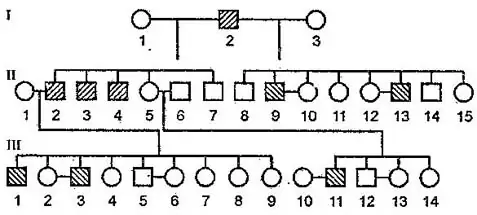What is Sex Limited and Sex Influenced Traits.
Sex limited and sex influenced traits are the result of genes on the autosomes and these are entirely different in their mode of inheritance from the sex-linked traits as their genetic determinants are not located on the sex chromosomes.
Sex-Limited Traits:
Sex-limited genes are genes which are present in both. sexes of sexually reproducing species but expressed in only one sex, mostly because of hormonal controls.
In other words, sex-limited genes cause the two sexes to show different traits or phenotypes. Strictly, this term is restricted to autosomal traits, to distinguish them from sex-linked characteristics.
An example of sex-limited genes are genes which instructs male elephant seal to grow big and fight, at the same time instructing female seals to grow small and avoid fights.
These genes are responsible for sexual dimorphism. The secondary sex characteristics in human beings like beard growth in males, breast size in females are some obvious examples of sex-limited traits.
One classic example involves the differences in shapes of feathers in hens and roosters. Whether or not the males in particular strains of chickens express the pattern known as Rooster feathering is determined by alleles at an autosomal locus.
The pattern that we commonly associate with roosters is actually a recessive autosomal trait (which has obviously been selected by chicken breeders).
A rooster with the dominant phenotype exhibits a pattern of feathering that is not different from that of hens. However, the recessive (hh) Rooster feathering phenotype occurs only in males. Females of the same genotype still express typical hen feathers. The following table describes the pattern of feathering type in domestic fowl.

Sex-Influenced Traits:
If the gene for particular trait is present on an autosome, but still appears tote more prevalent in one sex, then the trait is called as sex influenced trait. Genes for sex-influenced traits occur only on autosomes. These traits behave as dominant in one sex and a recessive in the other.
Examples include amount of body hair, muscle mass, and male pattern balding. In the case of pattern balding, there is an autosomal gene pair that determines a propensity to the condition.
The amount of thinning of the hair or balding that is observed depends both on genotype and the amount of testosterone exposure. A male who is BB will show severe balding.
A female who is BB will also be affected, but later in life and usually less severely, with a thinning of the hair, rather than total loss. A male who is heterozygous (Bb) will also become bald, whereas a female who is heterozygous will not be affected. Individuals of either sex who are fully recessive (bb) will not be affected.

Some more examples that show the pattern of inheritance characteristic of sex-influenced genes include the human traits, such as certain types of white forelock, absence of upper lateral incisor teeth, a particular type of enlargement of the terminal joints of the fingers etc.
While in animals, spotting in cattle, homed versus hornless condition in sheep are some examples of sex-influenced genes.


